

 What does our cover picture
bring to your mind? Do you see it as a winter wonderland, full of
beauty and wonder; or do you see it as a pain in the neck with bad
driving,
What does our cover picture
bring to your mind? Do you see it as a winter wonderland, full of
beauty and wonder; or do you see it as a pain in the neck with bad
driving, 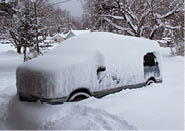 back-breaking snow shoveling, and
a general nuisance? Our situation in life from minute-to-minute can
affect how we answer that question, but the fact is that when you
look at winter and what it brings to earth and all things that live
on the earth what you see is incredible wisdom and planning.
back-breaking snow shoveling, and
a general nuisance? Our situation in life from minute-to-minute can
affect how we answer that question, but the fact is that when you
look at winter and what it brings to earth and all things that live
on the earth what you see is incredible wisdom and planning.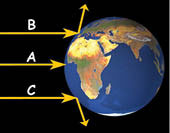 For a planet to sustain life, there has to be an
adaptation or accommodation of that life for the conditions that are
present. In the case of the earth, that is done primarily by the
presence of large amounts of water, and the system works because of
the design of water.
For a planet to sustain life, there has to be an
adaptation or accommodation of that life for the conditions that are
present. In the case of the earth, that is done primarily by the
presence of large amounts of water, and the system works because of
the design of water. Water is a polar molecule, meaning that
it has a geometry about its molecules that allows water to form a
solid that has a lower density than its liquid state. That is the
reason ice floats. This polar molecular structure also causes water
to freeze into beautiful crystal structures, like snow flakes.
Water is a polar molecule, meaning that
it has a geometry about its molecules that allows water to form a
solid that has a lower density than its liquid state. That is the
reason ice floats. This polar molecular structure also causes water
to freeze into beautiful crystal structures, like snow flakes.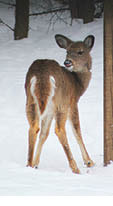 In addition to the thermodynamic properties related
to its state as a solid, water is a very poor conductor of heat. The
Psalmist stated it well when he said “He giveth snow like wool …” (Psalm 147:16). In the liquid state
this property allows lakes to have different temperatures at
different levels. Most of us have had the experience of diving into
a lake and hitting a layer of cold water, called the “thermocline,”
some depth below the surface. Fishermen know about this layer but it
can exist only because heat is
In addition to the thermodynamic properties related
to its state as a solid, water is a very poor conductor of heat. The
Psalmist stated it well when he said “He giveth snow like wool …” (Psalm 147:16). In the liquid state
this property allows lakes to have different temperatures at
different levels. Most of us have had the experience of diving into
a lake and hitting a layer of cold water, called the “thermocline,”
some depth below the surface. Fishermen know about this layer but it
can exist only because heat is 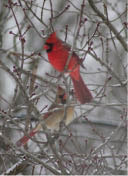 not conducted
well through the water. Ice on the lake and snow on the ground also
serve as wonderful insulators because of this property. That means
lakes do not freeze to the bottom in winter, protecting fish from
being killed. It also means that the surface of the earth is
insulated by snow in winter. This protects plants and their roots as
well as storing water for the coming summer.
not conducted
well through the water. Ice on the lake and snow on the ground also
serve as wonderful insulators because of this property. That means
lakes do not freeze to the bottom in winter, protecting fish from
being killed. It also means that the surface of the earth is
insulated by snow in winter. This protects plants and their roots as
well as storing water for the coming summer.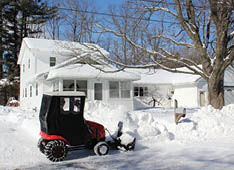 For the small creatures of the
earth, this insulation not only keeps their survival rate high in
winter by keeping them warm, but they form tunnels and have a secure
environment throughout the winter season. Predators have to find
them by sound, because they are not visible as they move freely
beneath the layer of snow. (See Dandy Designs “Foxes and Magnetic
Range-finders” on page 25.)
For the small creatures of the
earth, this insulation not only keeps their survival rate high in
winter by keeping them warm, but they form tunnels and have a secure
environment throughout the winter season. Predators have to find
them by sound, because they are not visible as they move freely
beneath the layer of snow. (See Dandy Designs “Foxes and Magnetic
Range-finders” on page 25.) Winter is also a time of freedom from
insects and disease which are less able to bring about their
afflictions in cold weather. While mankind may find winter a
difficult time primarily because our machines do not work as well in
the snow and ice, most animals are blessed with a positive time
during the winter months.
Winter is also a time of freedom from
insects and disease which are less able to bring about their
afflictions in cold weather. While mankind may find winter a
difficult time primarily because our machines do not work as well in
the snow and ice, most animals are blessed with a positive time
during the winter months.Back to Contents Does God Exist?, JanFeb12.